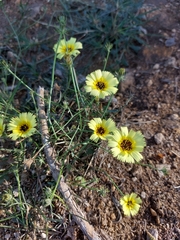Peruvian pepper tree
Schinus molle
Plantae Schinus molle, commonly known as the Pepper Tree, is a species native to South America but widely cultivated in various regions, including the Comunidad Valenciana. Known locally as "falso pimentero," this evergreen tree can adapt well to different climatic conditions, making it a common sight in this area.
- Appearance: The tree is noted for its feathery, pinnate leaves and its distinctive drooping branches, giving it an elegant profile. It can grow up to 15 meters tall.
- Bark: The bark is rough and dark brown, providing an interesting textural contrast with its vibrant foliage.
- Flowers: Schinus molle produces small, creamy-white flowers in panicles, which are often overlooked due to their size but are crucial for attracting pollinators.
- Fruit: It bears small, pink to red clustered drupes resembling peppercorns, which are used in various culinary applications, although they are not true pepper.
- Uses: While the fruit is not a true pepper and should be used with caution due to potential allergic reactions, it has been employed in traditional medicine and as a spice. The tree is also popular for ornamental purposes and erosion control.
- Habitat: Schinus molle is remarkably adaptable, thriving in well-drained soils with full sun exposure. It is drought-tolerant, making it ideal for the Mediterranean climate present in the Comunidad Valenciana.
The Pepper Tree contributes not only to the biodiversity of the region but also adds an aesthetic value to landscapes with its graceful appearance.







